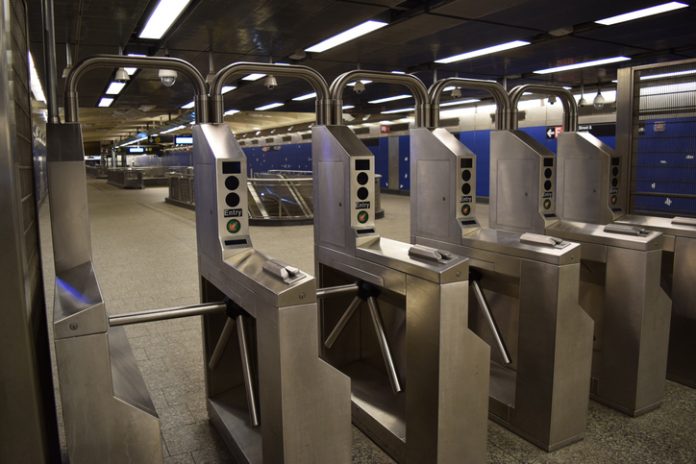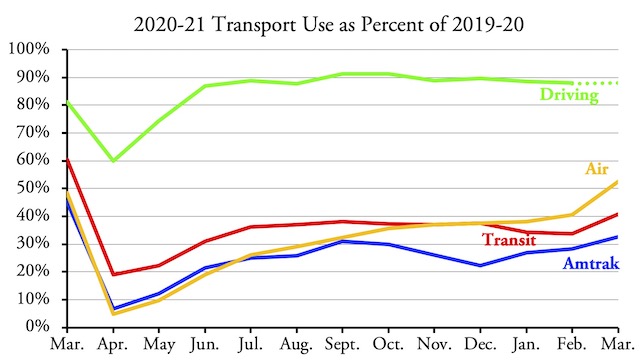Public transit carried 33 percent fewer riders in March 2021 than in March 2020 and 59 percent fewer than in March 2019, according to data published yesterday by the Federal Transit Administration. Since the pandemic started having an effect on transit in March 2020, we have to go back to 2019 to compare with pre-pandemic levels.
All forms of transport are recovering but some have recovered more than others. March driving data are approximate; actual numbers should be released in a week or so.
This is the first time since last March that transit ridership has exceeded 40 percent of pre-pandemic levels. Also for the first time, air travel exceeded 50 percent of pre-pandemic levels and Amtrak ridership exceeded 30 percent of pre-pandemic levels. March driving data won’t be available for a week or so.
Bus ridership is almost half of pre-pandemic levels while rail ridership is still only a third of March 2019. Transit systems that use mainly buses, such as those in Tampa, San Antonio, and Kansas City, have recovered the most, while those that rely heavily on rail—such as New York, Washington, Philadelphia, and San Francisco—have recovered the least. This, of course, reflects the fact that many rail transit customers are much more likely to have jobs that allow them to work at home than is the case for bus riders.
As usual, I’ve posted an enhanced version of the FTA spreadsheet, whose raw data includes monthly ridership and vehicle-revenue miles of service from January 2002 through March 2021. The enhanced spreadsheet has annual totals in columns IG through IZ, mode totals in rows 2224 through 2245, agency totals in rows 2251 through 3249, and totals for the 203 largest urban areas in rows 3251 through 3453. Column JA compares March 2021 ridership with March 2020, while JB compares March 2021 with March 2019. All of these enhancements are on both the UPT (unlinked passenger trips) and VRM (vehicle-revenue miles) worksheets.
Originally posted at The Antiplanner. Republished with permission.












